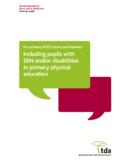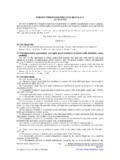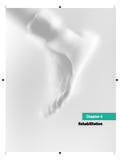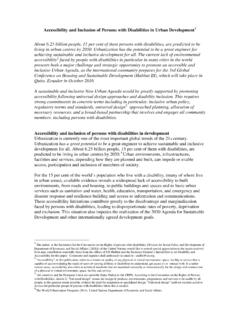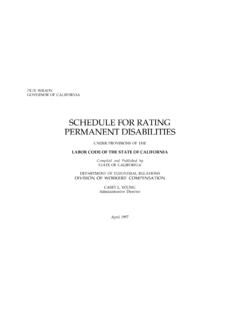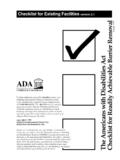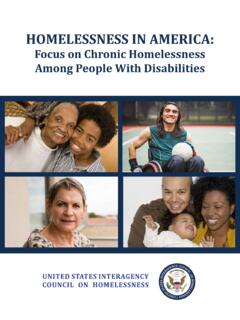Transcription of Physical disabilities - Inclusive Education
1 Physical disabilitiesA resource for educatorsNg a Hau atanga a-Tinana He rauemi m a te kaiwhakaakoJanuary 2015 ContentsIntroduction 3 How Physical disabilities can influence learning 4 How can I prepare for a student with Physical disabilities ? 5 Teaching students with Physical disabilities _ a framework 8 Creating an accessible and supportive learning environment 9 Using the key competencies to guide teaching 12 Using the learning areas to guide teaching 15 Student examples 27 Useful contacts and resources 343 IntroductionThis booklet provides guidance and outlines some of the practical strategies educators can use with students who have Physical disabilities . It aims to give you information you can use (alongside your knowledge and judgement about the classroom environment and your students) to meet the different learning needs within your will find most students with Physical disabilities will achieve success alongside their classroom peers and small adjustments to your regular teaching and learning programme will work well.
2 Other students may need more support to succeed. The strategies outlined in this booklet will be most effective when used in the context of good planning, knowing your students and what makes each of them unique, setting goals and using regular inquiry into what works and what doesn t. Discuss the strategies with other teachers or your school s learning support coordinator to find out how to best adapt them to your context and to suit the individual needs of your disabilities what are they? Physical disabilities are difficulties associated with sitting, standing, getting into position, moving, communicating, using and manipulating classroom tools and materials and is a Physical disability?How Physical disabilities can inf luence learningEvery situation and every student is different. Students may need significant help with all day-to-day tasks or may work independently.
3 Their experience will vary, depending on the nature of their Physical disability, whether it is short term or long term, their family setting and circumstances and individual factors such as age and personality. Students with Physical needs may find it challenging to: safely move around classrooms and the wider school environment manipulate and use some learning tools and materials, particularly writing tools access or participate in some curriculum activities, for example, Physical Education and technology carry out personal care tasks such as using the toilet, eating and changing clothes move and get into position to is a Physical disability?How can I prepare for a student with Physical disabilities ?Start by talking with the student, their families, wha nau, specialist teachers and other members of your student s team to understand your student and his or her learning will find a student s family, wha nau and specialists know the student best and will be a key source of information.
4 Talk to them (and your student) to build a good understanding of a student s practical, emotional and learning needs. Share with parents, family and wha nau the knowledge you gain about teaching their child. Encourage them to support learning at home. Share their child s success with them. Involve them and your student in key decisions. Connect families and students with other people in your school may also like to consider using the Individual Education Plan (IEP) process to help you prepare and plan. The IEP process can be a good way to bring people together to plan collaboratively and doesn t always need to result in a formal IEP most important thing is to prepare and plan well and to regularly review what you do and what s more information on the IEP process, refer to the Ministry s IEP guidelines, Collaboration for Success: Individual Education Plans, available in print and online at is a Physical disability?
5 Starting out ideas to think aboutThere s no one- size-fits-allAll of your students bring a huge variety of skills, needs and interests to their learning. These differences are as unique as their fingerprints. Students want access to learning in the way that works best for them. Know your studentTalk with the student, family, wha nau, specialist teachers and other members of your student s team to come to understand your student and their learning potential. Find out about the student s interests, likes and the things that motivate the a learner as well as a teacher. Reflect on the impact of your practice and actions. What is important (and, therefore, worth spending time on, given where my students are at)? What strategies (evidence-based) are most likely to help my students participate and learn? What has happened as a result of my teaching and what will I need to do next?
6 7 What is a Physical disability?You don t need a separate curriculumTake a flexible, Inclusive approach to teaching and you will find very little, if any, adaptation to the curriculum is required. Be flexible in the goals you set, as well as the teaching methods, materials and assessments you and prepareTalk with and involve your student, their parents, family, wha nau and other specialists. Build a team around your student. Develop a good learner profile. Set clear goals and check in matters how you see disabilityBe a disability champion in your school and your classroom. See the student first (not their disability). Look at the world through your student s eyes. Understand how societal attitudes towards disability can create barriers for students. Design your classroom in a way that removes those barriers and works for all students and all ways of living in the world.
7 8 FrameworkTeaching students with Physical dis abilities _ a frameworkThere is extensive well-documented evidence about the teaching approaches that consistently have a positive impact on learning. The evidence says all students need teachers who: create supportive learning environments encourage reflective thought and action enhance the relevance of new learning facilitate shared learning make connections to prior learning and experience provide sufficient opportunities to learn inquire into the teaching-learning The New Zealand Curriculum, pg an accessible and s upportive learning environmentAccessible and supportive classrooms can be a rich teaching resource for helping students learn about diversity and positively relate to one another. They can foster student collaboration, problem solving and learning and give all students a sense they belong at school and can participate.
8 There are many ways you can create a more accessible and supportive school and classroom environment. Here are some key questions to think about and discuss with your students and their families and wha environment Can the student move through the school doorways and corridors easily and safely? Are the school toilet areas easy to access with accessible toilets and hand washing facilities? Do wheelchair ramps need to be installed? Is the outside equipment safe to use and does the student feel safe using it? Do you need advice from a Ministry of Education school property advisor, physiotherapist or an occupational therapist? Will staff need to make allowances for any additional time a student might need to move around the classroom, between classes and throughout the school grounds? Does the timetable need changing to allow the student easier access to classrooms and to reduce the travel distance between classes?
9 Peter, five, has just sta rted school. He is fea rless, loves to play soccer with his friends a nd cli mb on the playgrou nd. Peter has he miplegia where one side of his body doesn t fu nction as well as the other. But it s something he often forgets a bout in his enthusiasm to be pa rt of the a environment Are all classrooms well set up and fully accessible? Is the classroom uncluttered? Do you need class rules to keep bags well stowed and chairs pushed in? Can students move around easily, view the board and sit and work alongside their peers? Can the student use all the tools and equipment in class and participate in all curriculum areas? Is any additional assistive technology required (such as specialist classroom furniture, writing tools or assistive technology such as a light weight keyboard)?Alice, 14, loves science a nd maths. She s just retu rned to high school after a six-month period of che mo a nd radiotherapy treat ment for a brain tu mou r.
10 Like a ny teen, Alice missed her friends terribly but kept in regula r conta ct by text a nd Fa cebook. She s ba ck in class half ti me, but needs support from a n occupational therapist a nd physiotherapist a nd ti me out for hospital check ups. At the moment, she is using a wheelchair to get a rou nd u ntil she s strong enou gh a nd has the bala nce to use a walking fra the key competencies to guide teachingThe New Zealand Curriculum identifies the key competencies students need to live, learn, work and contribute as active members of their communities. These key competencies are relevant to all students and all learning areas. They include: thinking using language, symbols and texts managing self relating to others participating and of these competencies are explored in more detail on the following pages to show how they might relate to students with Physical New Zealand Curriculum key competenciesParticipating and contributingTeaching supportAll students need the opportunity to be actively involved in the life of their school, the activities of their classroom and in the wider community.
